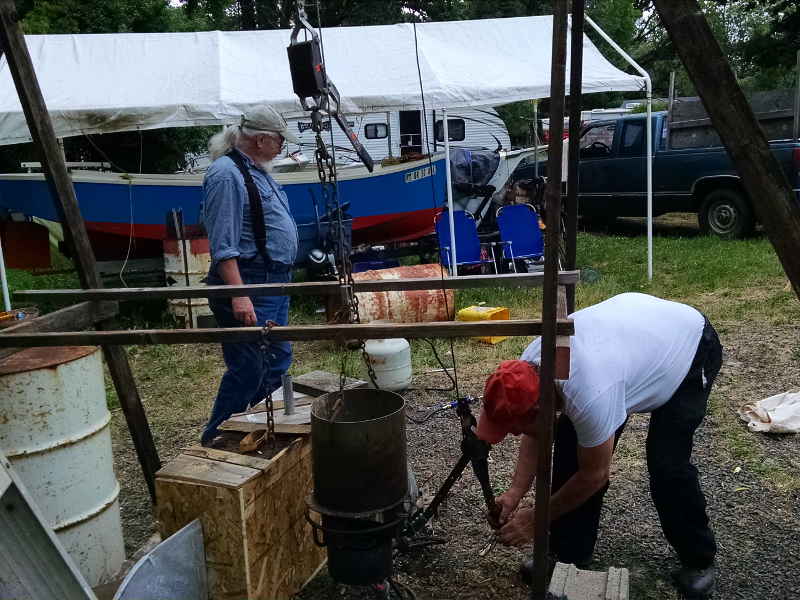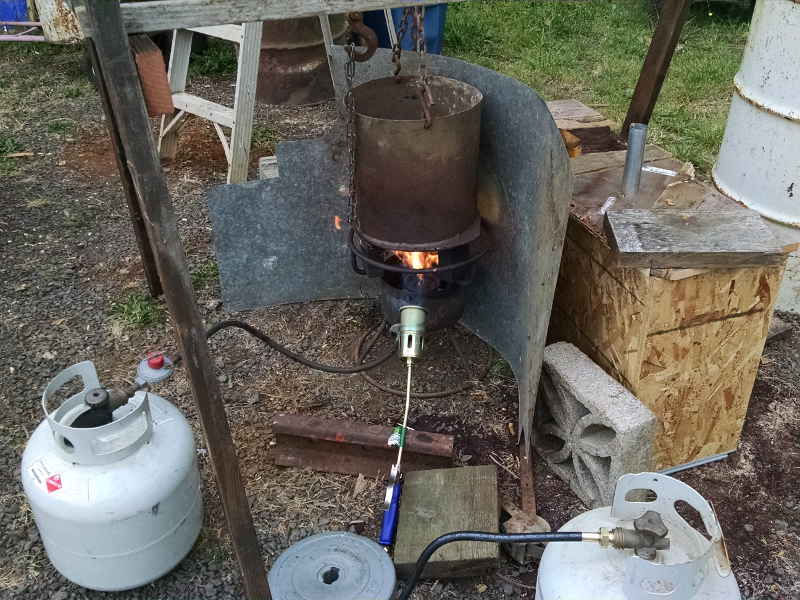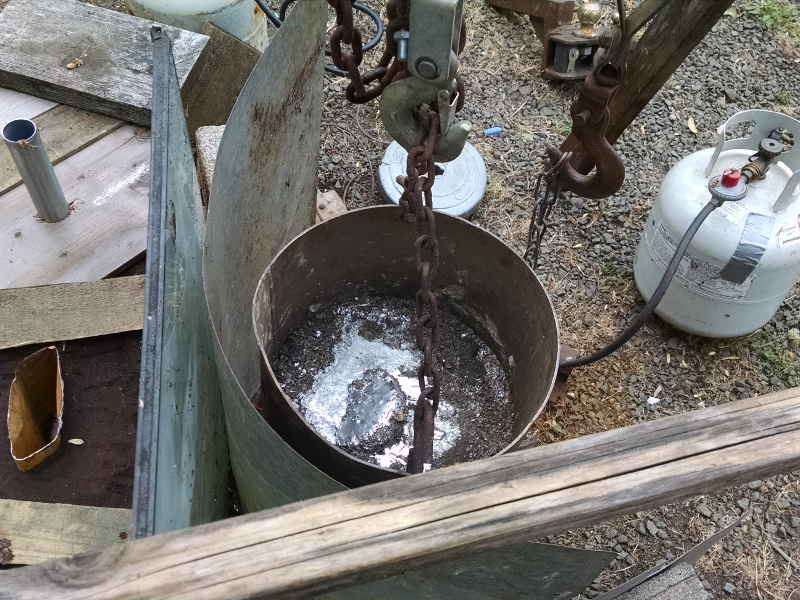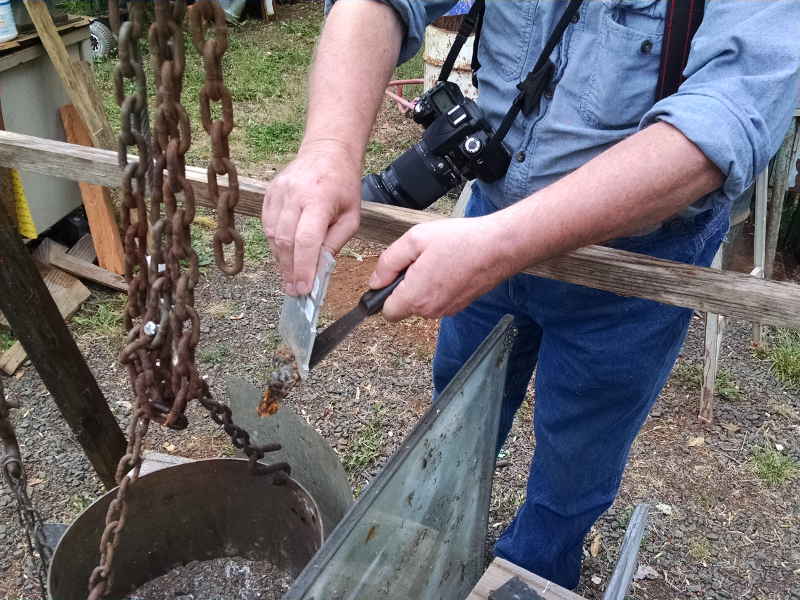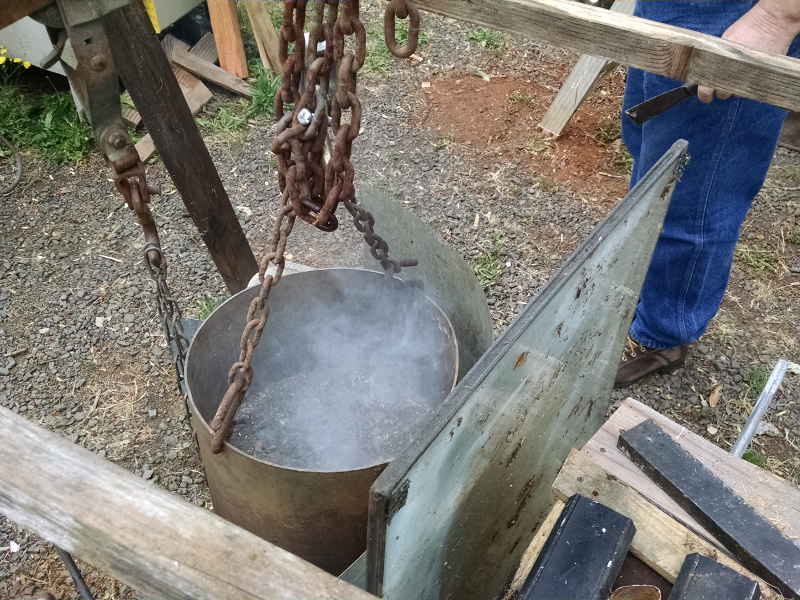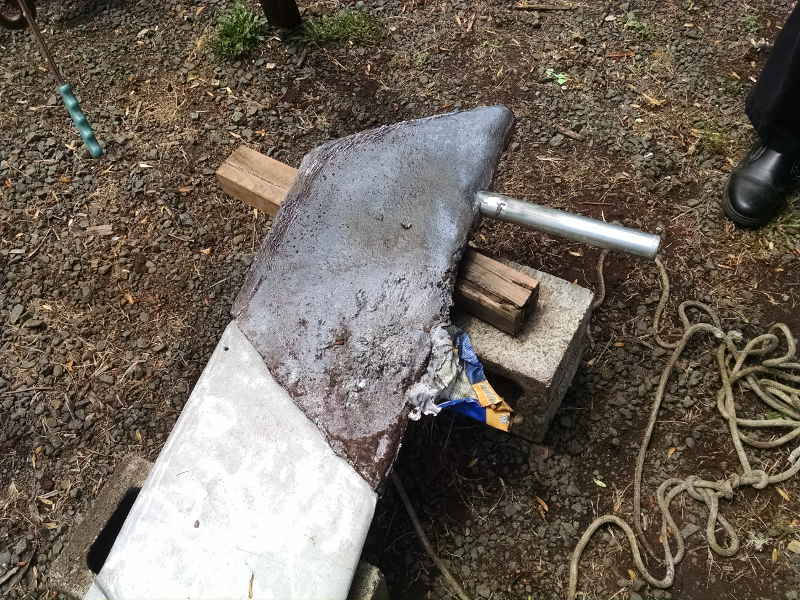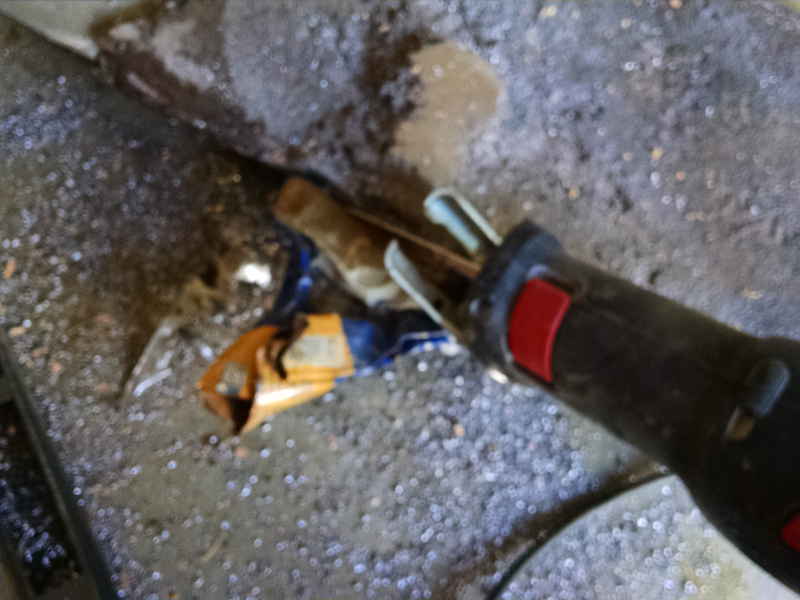|
Pouring the Lead for the Keel This has been a long time coming. I bought the boat back in September 2015 and have been twiddling with it ever since. This keel issue was bigger than I thought. Nutshell: 200+ pounds of let is a LOT of lead. :Preparation The idea was to make a male plug of Styrofoam. The lead bulb on the keel is 2.25" thick so I got a 3/4" thick piece of 2x4 sheet of wall insulation foam and got to cutting. Easy enough. The foam is supposed to 'evaporate' at the heat of molten lead, but I wasn't sure of the facings, so I peeled them off as well as I could. I cut out the spot for the keel's stub and laminated the 3 pieces together with spray adhesive. I then shaped the plug using a random orbital sander with an 80 grit disk. It took minutes. The 'flask' was made from 3/4" ply and has a minimum of 4" of space all around the plug. Here is a test of the keel stub. Wait - it doesn't fit! Oh, that's because it is upside down :) Try 1 For the first, unsuccessful, attempt, we used a turkey fryer stand and a big steel pot. We were going to ladle the molten lead into the flask. Joe was acting as Lead Consultant on this. I'd forgotten my crescent wrench for hooking up the propane bottle and these were the choices of wrenches Joe had. The chunk of lead that had broken off from the keel was too big to fit into the pot, so we used a chainsaw to cut it into smaller bits. Keel inserted, plug loosely installed, we are ready for sand. We tossed the lead into the pot and turned on the flame. It was not impressive - the flame was not the roaring blue joy I was used to from a propane burner. We tried adjustments, but couldn't get it any hotter. Oh well, nothing to do but continue. Joe has lots of casting sand, and while we waited for the lead to melt, we sifted the sand and packed the flask. Then we waited for the lead to melt some more. Joe tried adding a 12V blower to the mix, hoping the added air flow would result in a hotter flame. It didn't. We eventually gave up and I went home without a new keel, but I did have this nice picture of Joe's butt, which is nice. It was time to do some thinking. Try 2 - a Qualified Success When I returned the following week, Joe had erected this scaffold to allow us to pour the lead from the pot. John K gave his approval.
Joe had devised a system of two come-alongs: One to lift the pot to the proper height and one to tilt it when the lead was ready.
I had gone to Harbor Freight and gotten a weed burner torch for $20. It makes a lovely roaring sound when lit and REALLY pumps out the heat. We had the turkey burner hooked up, too, because more heat is better.
The lead was melting nicely. We had a little more than 2 gallons, then added more, just in case.
John had read that if you add beeswax to the molten lead, it will "draw some of the things we want from the slag floating on top down into the lead." We didn't have any beeswax, but we did have some soldering flux, which we figured was just about the same thing. In it went.
The beeswax melted and caused a lot of smoke, which we then set of fire because . . . John told us to. It was now ready to pour. I don't have any pictures of the pour - we were busy trying not to get burned and scarred for life. We were safe, the pour went well. Nobody got hurt. Joe estimated we'd need to wait several hours for the lead to cool enough for transport, so I went home. The Result Hmmm. When the Styrofoam. melted, the lead that replaced it must have forced the sand out, because this is about 1/2" thicker than it should be. The blue metal thingy was the funnel we'd used to guide the lead into the mold - we'd made it from a can. The piece of pipe was the exhaust for the gasses as the Styrofoam. melted. We should have fixed both pieces in place on the flask - as it was, we'd just rested them on the Styrofoam. mold and packed sand around them. When the Styrofoam. melted, they sunk down a bit and got covered in lead.
I have it at home now and am trying to shape it. I need to remove about 1/2" from the thickness - and that's a lot of lead. I am trying different things, all while trying not to poison myself. The Sur-Form rasp works well, but it takes a lot of effort.
Sorry for the blur. I used a reciprocal saw to cut off the metal funnel - that came out easy enough.
There were a couple of really big lumps right at the funnel that I ended up using a cold chisel to pound off. This will take time. Here's the advice I have from the internet:
I'll keep you posted!
|


